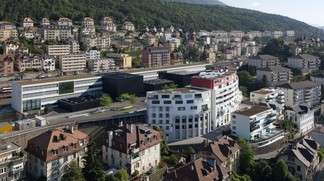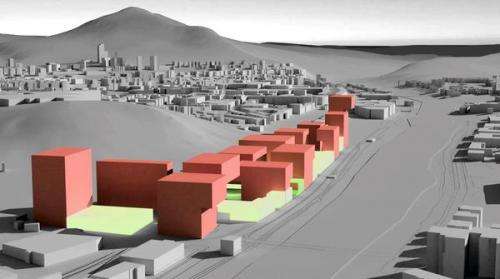Transforming urban wasteland into opportunity

How can disused urban sites be regenerated sustainably? A new book addresses this important issue.
Almost every city has them - closed down factories and utilities, run down and abandoned commercial and residential plots. Today, derelict urban sites are increasingly being considered as a resource by urban planners and architects in cities strapped for space but seeking to grow. In Europe, their regeneration has become popular, often revitalizing city centers while increasing their density. In a book that was published recently, Emmanuel Rey puts forward a framework based both on research projects and concrete experience gained in the context of the rehabilitation of what is now the Ecoparc neighborhood in Neuchâtel to help integrate sustainability into the core of this regeneration process.
With the number of city dwellers on the rise, cities are under pressure to accommodate more and more residents - ideally without spilling over the already built perimeter. Loosely connected built areas squander space and spoil the landscape, and studies show that they lead to higher energy consumption per capita, increased reliance on cars, and much higher infrastructure costs than dense settlements. So what can be done to limit the spreading of urban development onto previously uninhabited land?
"In the heart of built areas, we often run into urban fallows, wastelands, plots of lands whose functions have fallen out of demand," says Rey, who is a professor in the Laboratory of Architecture and Sustainable Technologies (LAST). Sites left abandoned following the shutting down of factories, railway lines, military sites, hospitals, or other infrastructures. "By reclaiming and regenerating them we can give them a second life as contemporary residential, commercial, institutional and public areas. The facts that they tend to be located within urban areas, that they are already tied into the transportation and public utilities networks, and that they are lying idle make them ideal candidates for this type of transformation."

In Switzerland, a quite densely populated country in the heart of Europe, urban wastelands cover a surface larger than the city of Geneva and have the potential to absorb the population growth expected for the coming decade. But transforming them sustainably is challenging. According to Emmanuel Rey it isn't enough to increase their density, recycle an optimal fraction of wastewater and locally produce solar energy. "It is essential that we optimize the economic and environmental performance of cities. But to achieve true sustainability, this must be done keeping in mind the social and emotional dimensions as well," he says.
The bulk of Emmanuel Rey's new book presents a methodology based on a catalog of indicators, with which urban land regeneration projects can be evaluated from the day of their conception to their final conclusion. "The methodology presented gives practitioners involved in urban land regeneration projects a more robust foundation on which to base their decisions, in particular regarding their sustainability," says Rey. By federating the highly fragmented practical and theoretical know-how that has accumulated in urban regeneration, this book aims to provide a structured reference work in this developing field with a bright future.
More information: Book Summary (Presses Universitaires de Louvain) Laboratory of Architecture and Sustainable Technologies (LAST) last.epfl.ch/
Provided by Ecole Polytechnique Federale de Lausanne


















